Matador Network's Blog, page 1180
January 17, 2019
Reasons to visit the Dinaric Alps
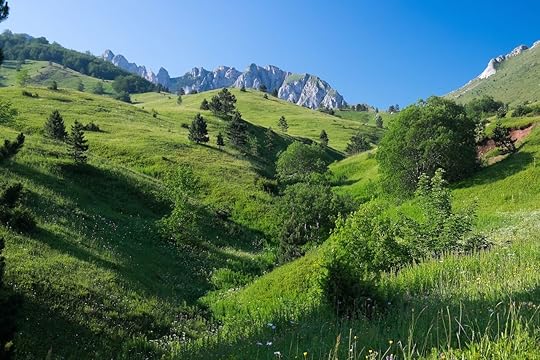
When someone mentions the Alps, you probably picture yourself skiing down the Matterhorn in Switzerland or lounging by Lake Como with the Clooneys, sipping Aperol spritzes in the shadows of tall Italian peaks. You probably don’t imagine mountains looming over Albania, Kosovo, or Montenegro. Enter the Dinaric Alps, or Dinarides, Eastern Europe’s answer to Western Europe’s iconic range. Here’s why you need to visit what might be the continent’s most unspoiled wilderness.
They start where the Eastern Alps end.

Photo: TPGryf/Shutterstock
Loosely speaking, the Dinarides pick up in Italy where the Eastern Alps leave off. The range travels south along the Dalmatian Coast on the eastern side of the Adriatic Sea that divides Italy from the Balkans. Only a small piece of the range is located in Italy, near Trieste, but the bulk and best parts are farther down the Balkan Peninsula. The tallest peak, Maja Jezercë, watches over Albania from 8,839 feet while the main mountain passes are split between Slovenia, Croatia, Serbia, Bosnia and Herzegovina, and Montenegro.
This part of Europe has seen a huge spike in tourism over the last half-decade, yet too many visitors overlook what might be the continent’s most unspoiled wilderness in favor of its cheap, up-and-coming cities and now-congested beaches. While the low cost of travel is enough of an incentive to visit the Balkans, the Dinarides is yet another reason you should consider Eastern Europe the next time you find yourself daydreaming about the Alps.
They’re an outdoor adventurer’s dream.
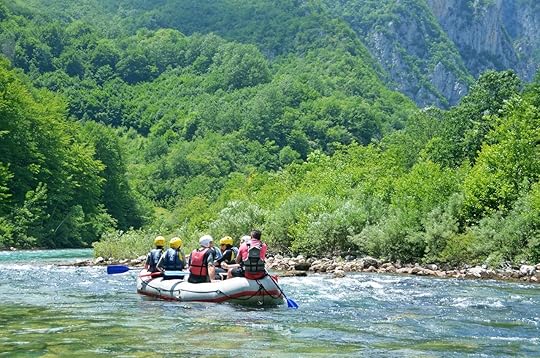
Photo: Ovchinnikova Irina/Shutterstock
While the Alps in France, Switzerland, and Italy are world famous for their snow sports, the Dinaric Alps offer themselves as a playground for hikers, mountain bikers, free climbers, whitewater rafters, and general outdoorsy types. A few ski resorts there make decent options for budget ski trips, but you’ll get what you pay for.
Summer is the best time to take advantage of the mountains’ outdoor offerings, which not-so-coincidentally makes it the peak travel season. When the weather’s warm and the water’s nice, you’ll have your pick of river-based activities. Anglers will adore casting their lines for trout in the Kupa River, which flows through Croatia and forms a natural border with Slovenia. Also replete with fly-fishing opportunities is the Neretva River in Croatia and Bosnia and Herzegovina.
That’s just the beginning in the Neretva Valley, however. Boating is a solid option for birders who want to catch glimpses of cormorants, bitterns, egrets, terns, and more, while adventure seekers can go kayaking or even kiteboarding. Whitewater rafting is also huge here, owing to the area’s Class III rapids. As an alternative, cruise down miles of whitewater in Montenegro’s Tara River Canyon for an exciting, scenic rafting escape.
Attractive as the water sports on these rivers and mountain valleys may be, hiking is the real draw to the Dinaric Alps. Day hikes are easy to arrange, but you can also roam the Dinarides for a week, a month, or even longer thanks to the Via Dinarica, a long-distance hiking route that’s only recently started getting the acclaim it deserves.
The Via Dinarica rivals the Camino for long-distance walks across Europe.

Photo: mapraest/Shutterstock
Forget racing countless other pilgrims to get a bunk at the first-come, first-served hostels along the Camino de Santiago at the height of summer. Sure, some routes are quieter than the Camino Francés and certain months are less crowded than others. But nothing compares to the truly remote wilderness experience you’ll get on the Via Dinarica.
Steadily gaining in popularity, the long-distance route weaves together more than 1,000 miles of the Western Balkans from Slovenia to Macedonia, home of the Sharr Mountains. The main route is the White Trail. It connects the tallest peaks in the seven countries the route crosses (that’s Slovenia, Croatia, Bosnia and Herzegovina, Montenegro, Serbia, Albania, and Macedonia — in case you lost track) and Kosovo, a self-declared independent state.
The Blue and Green trails are still being developed, but there’s plenty of well-marked territory to explore. Both trail names give a good indication of what you can expect. The Blue Trail winds down the deep-blue waters of the Adriatic coastline, offering easier hiking and the best trails for cycling, while the Green Trail takes you through the lush, conifer-dense forests of the lower Dinaric mountains.
Trekkers get more than just scenery, though.

Photo: Vlada Photo/Shutterstock
Over the years, much of the cultural and political landscapes of the Balkan region has become part of the physical landscape, as well. The trails that make up the Via Dinarica might seem arbitrary, but the network actually repurposes routes forged throughout history. Roman trade routes connect to Yugoslavian military tracks, which in turn connect to footpaths used by shepherds today. That means you’re just as likely to see the remains of an ancient Illyrian shelter as you are a war memorial from decades ago.
Part of the project’s mission is to encourage responsible tourism in an area that suffered so many years of conflict that some people still doubt its credibility as a travel destination. The Via Dinarica succeeds not only in literally connecting the countries at the heart of this cultural crossroads but also in showing hikers firsthand what life is really like in the Western Balkans. When they aren’t sleeping in tents, trekkers can arrange overnights in huts, lodges, and guest houses located in rural villages, where they’ll get a proper taste of mountain life — and plenty of hearty local eats.
Those who’ve done the Via Dinarica tend to rave about Bosnia and Herzegovina, citing the country’s Sutjeska National Park as an overall highlight. If you’re sold on the adventure, learn more about the trails, permits, packing lists, and other FAQs here.
The mountains are spectacular, but the cities below are pretty great too.

Photo: Matej Kastelic/Shutterstock
Travel to the Dinaric Alps invariably means spending some time closer to sea level in the range’s host countries. Make the most of your trip by easing into an alpine trek with a gentle walking tour of Ljubljana, Slovenia’s capital. Or budget for a few extra days in Sarajevo, the Bosnian capital, to see its medley of mosques, churches, and synagogues all backdropped by the Dinarides. This shouldn’t be too hard; most of the Balkan capitals secured top spots on our list of the cheapest European capitals — with Pristina, Kosovo, coming in at the second cheapest and Podgorica, Montenegro, taking third — so there’s no reason not to go all in when visiting the Dinaric Alps. 

More like this: Here’s why Montenegro is an outdoors paradise
The post Why the Alps you need to visit are actually in Eastern Europe appeared first on Matador Network.

Traditional Italian meat dishes
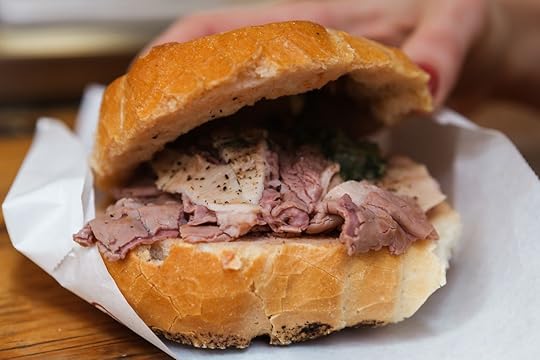
When it comes to Italian food, there are the basic you know and love: pizza and Italian pasta dishes. Maybe you think of some meatballs, prosciutto, and other sliced salumi as well. But there’s so much more to the beloved food of Italy.
Italian cuisine is highly regional and varies place to place (as does the regional Italian wine and food pairings). Some of the variation dates back to tradition, some is due to what’s available in the area. Meat dishes are one of the clearest examples of this, as some Italian regions have cuts of meat you can’t find anywhere else. These seven traditional Italian meat dishes give you an idea of just how diverse Italy’s food culture is.
Lampredotto from Florence
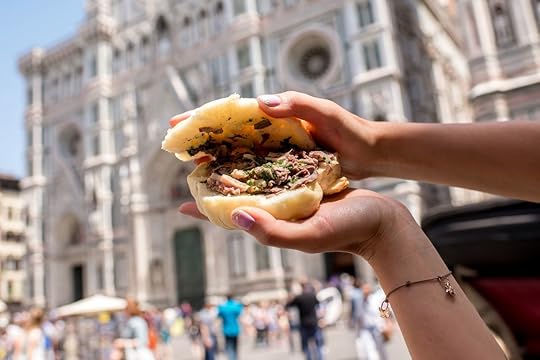
Photo: RossHelen/Shutterstock
Lampredotto is a classic dish from the Tuscan city of Florence. This low-cost street food is made with semelle (a soft bun with one side soaked in broth) filled with the fourth stomach of a cow, called the abomasum. The meat is boiled in an herbaceous broth with tomato, onion, parsley, and celery before being thinly sliced. The name lampredotto refers to how the meat looks like the lamprey eels that were once common in the River Arno. In the 1500s, lampredotto and other tripe was all the poor could afford, and it was sold in kiosks on the street. It’s still sold as street food today, and something you should give a try when walking the streets of Florence.
Gran bollito misto from Piedmont
In Piedmont, it’s a mix of meats that wins the hearts of the locals. Gran bollito misto, which means boiled mixed meat, is, as the name suggests, made of at least seven main cuts of meat, seven supporting cuts of meat, and seven bagnetti (sauces). The main cuts include ones not commonly found in the US that lack English names, like tenerone (neck meat), punta di petto (similar to brisket), scaramella (from above the ribs), and cappello di prete (part of the shoulder). The supporting cuts are what many people mistakenly throw away or avoid, like tongue, head, tail, foot, tough stewing hens, and cotechino (fatty pork sausage). All the meat is boiled together to make a broth along with vegetables, then served on a plate with those vegetables and the seven bagnetti.
Panino con cavallo from Puglia and Sicily

Photo: from my point of view/Shutterstock
Mostly eaten in the southern part of Italy, especially in Puglia and Sicily, the panino con cavallo is a horse meat sandwich. The horse meat can be grilled, braised, or even be raw. It’s seasoned with different spices, and then put between two slices of bread or, if you’re in Puglia, into a puccia, a typical regional bread similar to pita bread.
Brasato al vino rosso from Lombardy
If you’re in one of the northern regions of Italy, you can’t avoid a taste of brasato al vino rosso, a slow-cooked meat soaked in red wine. It’s usually made with the cappello del prete cut of meat, which is the tough bovine shoulder muscle that needs extensive amounts of time to soften. First, the meat is put into a bowl with vegetables and red wine and left to marinate overnight. It’s put into a pan the next day, where it cooks for a minimum of two hours, or until the red wine turns into a thick sauce.
Arrosticini from Abruzzo

Photo: Lusso Adv/Shutterstock
Arrosticini are small chunks of castrated sheep, mutton, or lamb that are skewered and cooked on a long rectangular grill specifically made for cooking arrosticini. Cooking the skewers is a popular activity in the warm summer months. It’s kind of like an American barbecue, but instead of having one territorial chef manning the grill, people can turn their own skewers as they wish. The traditional way of cooking and eating is closely linked to the pastoral traditions of the Abruzzo region and to the heavy consumption of lamb in the area in the past. Arrosticini are usually accompanied by a glass of wine and slices of homemade bread sprinkled with extra-virgin olive oil.
Arista al forno from Tuscany
Arista al forno is a typical Tuscan roast with origins dating back to the 15th century. It’s said that the arista owes its name to the enthusiastic comment “aristos!” (the best) said by the clergymen who served the roast pork loin during the Ecumenical Council. The specialty of the arista is that it’s cooked first in the pan and then baked in such a way that it becomes flavorful and crispy on the outside. It’s usually served with baked potatoes and salad.
Cotoletta alla milanese from Milan

Photo: AS Food studio/Shutterstock
Cotoletta alla milanese is a veal cutlet that’s kept on the bone and hammered flat before being breaded and fried in butter. It’s one of the most traditional and well-known dishes of Milan with ancient origins. According to legend, the dish dates back to at least the mid-1100s by the name lompolos cum panito. It’s similar to the Austrian wiener schnitzel, which is prepared the same way but with the bone removed. 

More like this: Your guide to the wine and food of Italy
The post 7 traditional Italian meat dishes better than meatballs appeared first on Matador Network.

Black-and-white cartoon chapel

Whether you’re getting married, renewing your vows, or just want to take advantage of a can’t-miss Instagram backdrop, this black-and-white wedding chapel is the perfect photo opportunity. The “Til Death Do Us Part” installation, opening Friday at Las Vegas’ Palms Casino Resort, was conceived by designer and visual artist Joshua Vides. This 800-square-foot cartoon-like chapel was inspired by his “Reality to Idea” series, and it encourages couples already considering getting married in Las Vegas to do so in this zany decor.
View this post on InstagramA post shared by Palms Casino Resort (@palms) on Jan 16, 2019 at 10:04am PST
According to the website, several packages are being offered to couples looking to tie the knot, including:
Our Marriage Looks Perfect ($250) — includes an hour in the chapel, allowing for plenty of time to capture the perfect pictures for all of your social channels (photographer not included, must reserve time in advance).
The Shotgun Wedding ($500) — includes an hour in the chapel and a complimentary bottle of Moët & Chandon Moët Ice Imperial.
Black, White, and Wed ($500 to $5,500) — includes a ceremony in the chapel and a four-course dinner at Scotch 80 Prime or Vetri Cucina with various beverage packages available for up to 24 people. Take the after-party to APEX Social Club with complimentary VIP admission.
For Better Or For Worse (from $4,500) — includes a one-night stay in the Make Good Choices Suite, a two-hour catered reception in the suite that consists of tray-passed hors d’oeuvres, food stations, dessert station, and a beverage package.
View this post on InstagramA post shared by Joshua Vides (@joshuavides) on Jan 16, 2019 at 9:59am PST
The pop-up experience is part of the Palms’ massive $690 million renovation, geared toward giving the hotel a modern art museum vibe. 
H/T: BuzzFeed

More like this: This hilarious Instagram account shows how unoriginal travel influencer photos are
The post This black-and-white chapel is the perfect Instagram backdrop to get hitched appeared first on Matador Network.

Jellyfish Lake in Palau open again

Jellyfish are usually a downer to all those who love wild swimming, but in the saltwater lake on Eil Malk Island in the Pacific country of Palau, the golden jellyfish are the reason visitors come in droves. Since the golden jellyfish in this lake have no natural predators, they have lost the evolutionary ability to sting, making it a perfectly safe (and very cool) swimming destination for tourists.
But, in 2016, due to an extremely worrisome decrease in the golden jellyfish population, beautiful and unique Jellyfish Lake wasoo closed to visitors. The lake was traditionally home to an average of 8 million jellyfish, but a drought triggered by the ocean-warming effects of El Niño had caused the population to severely decline to 600,000 in 2016.
Ongoing monitoring by the Coral Reef Research Foundation, however, has found that the population is rebounding, and the lake is once again suitable for visitors.
According to a government statement, the lake now has “sufficient numbers of jellyfish to provide visitors with a quality experience.” While the lake may be open again, management will still be closely monitoring the site, and taking measures to ensure the protection of the jellyfish. A permit will also be required of tourists wishing to swim in the lake.
Palau’s effort to revitalize its natural environments isn’t just limited to Jellyfish Lake. In November 2018, the government banned sunscreens that are harmful to coral reefs; and the import and sale of all reef-toxic sunscreens on the island will be prohibited starting January 1, 2020. Palau also requires visitors to sign a pledge when they arrive on the island, promising to behave responsibly toward the country’s natural and cultural heritage. 
H/T: Lonely Planet

More like this: 5 places to go diving around Palau
The post Palau’s Jellyfish Lake has just reopened to visitors appeared first on Matador Network.

January 16, 2019
Underrated Mexican state capitals
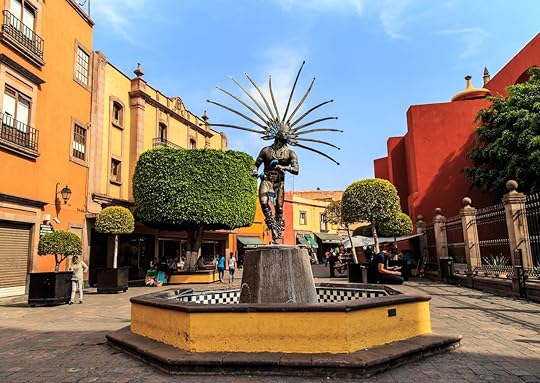
Among the 32 state capitals in Mexico are a few that get almost all the attention on travel sites and agency itineraries. Mexico City, Puebla, and Oaxaca are undeniably gorgeous and should be on the list of every visitor. But if you have time and don’t depend on fixed tours or inflexible travel companions, a look beyond the conventional reveals the splendid architecture, vibrant art culture, and crazy gastronomy of the lesser-visited capital cities. Here’s where to head now before word gets out.
1. Tlaxcala City, Tlaxcala
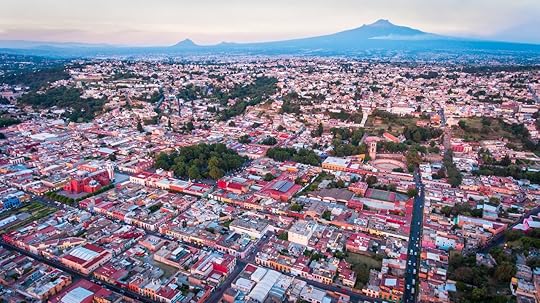
Photo: Miguel Rodriguez Paredes/Shutterstock
The cozy and compact capital of the smallest Mexican state is only a couple hours from Mexico City and less than 30 minutes from another tourist draw, Puebla. Despite the easy commute, this capital doesn’t receive many visitors from other states and countries, which makes it even more attractive for people searching for an authentic experience. Tlaxcala is rich with history, and the best way to take it in is by visiting the Government Palace. Inside are huge, colorful murals that vividly represent essential scenes and moments of Tlaxcalan history. An insider’s tip: For a better understanding of the murals and the stories behind them, ask the staff for a short explanation.
Another must is the Tlaxcala Art Museum, especially if you’re a Frida Kahlo fan. This small contemporary art museum has a collection of early and lesser-known Frida Kahlo artworks. A few blocks from the city center and right next to the Zahuapan River you’ll find the Living Museum of Folk Arts and Traditions, a charming exhibition with an emphasis on textile and Tlaxcalan village life. Artisans are often there to guide you through the more than 3,000 artifacts, and next door is a small shop with quality local products, such as honey, hand-woven scarves, and baskets.
You’re in the right place for incredible food, as well. Agriculture is widespread in the state, and throughout the city you’ll find fresh blue corn tortillas, pulque (an alcoholic beverage made from the fermented agave sap), and fried insects that taste better than you’d think. Head to Pulquería La Tía Yola near the main square and order the passion fruit curado (pulque mixed with fresh fruit), beef and pulque stew, a pit-barbecued meat known as mixiote, and some escamoles, local ant eggs known as Mexican caviar.
2. San Luis Potosi City, San Luis Potosi
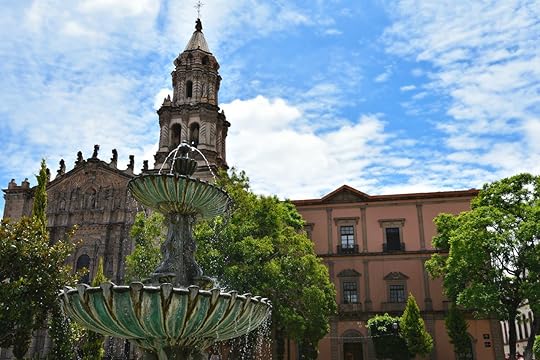
Photo: Eleni Mavrandoni/Shutterstock
Not long ago, San Luis Potosi was considered a grey, industrial city with a great strategic position in a rich agricultural, livestock, and mining region. It was a draw for industry and commerce but totally off the radar for foreign and domestic tourists. But things have been changing in the last few years. Recent openings of several boutique hotels and an arts center, numerous music festivals, and a splendid craft beer culture are beginning to draw a wider population.
The city’s historic center is a great mixture of different artistic styles and an important example of colonial architecture. In 2010, it was listed as a UNESCO World Heritage site as a part of Camino Real de Tierra Adentro, also known as the Silver Route. The route consists of 55 sites along the nearly 900-mile road that was used for the transportation of silver from San Luis and other Mexican states to New Mexico in the United States. To learn more about the city’s mining history, pay attention to the markers in Spanish and English, with more details about specific buildings throughout the city.
The Arts Center Centenario, located in former federal prison, is a castle-shaped building that’s home to an arts academy, theater, library, and a small market selling innovative creations from academy’s students and professors. The building also houses several exhibition halls, with everything from photography to ceramics, and the Leonora Carrington Museum.
The National Mask Museum on Plaza del Carmen is dedicated to Mexico’s masked dance and ritual heritage from the pre-Hispanic period to the present. It boasts 1,300 masks, the largest collection in the country. On the outskirts, Tangamanga Park invites you to relax by the lake, see a movie in Carlos Amador Theatre, or learn about the state’s diverse climate in the Ecomuseo. Two parks have the same name, so be sure to head to the one with “Ex-Hacienda” in it.
The nightlife scene in San Luis might not be as vibrant as in larger Mexican cities, but there are some attractive bars and pubs that can keep you awake until the early hours. The city has also been successfully following the craft beer boom across the country. Check out La Oruga y La Cebada and La Internacional Cerveceria.
3. Xalapa, Veracruz
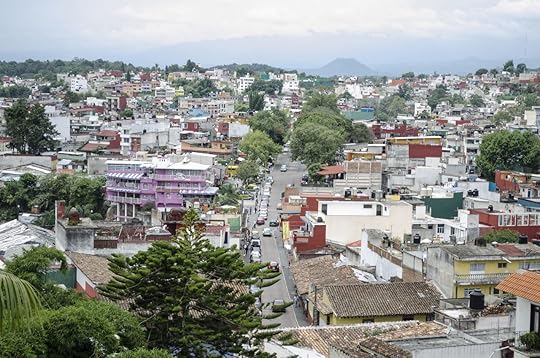
Photo: Aurora Angeles/Shutterstock
Xalapa has always been in the shadow of the bigger and warmer port of Veracruz. This is partly because it always seems to be cloudy and raining, a turn-off for many people. But the city, surrounded by misty highlands and known for producing the best Mexican coffee, is a culture and art hub with a large student population and an alternative vibe.
The first thing on your list should be visiting Xalapa’s Anthropology Museum, one of the country’s most important archaeological museums. It contains more than 2,500 pieces of Mesoamerican pre-Hispanic art, principally from four civilizations: the Olmecs, the Totonacs, the Huastecs, and Classic Veracruz. Go early and plan to stay for a few hours.
Next, the Contemporary Art Gallery in a renovated colonial building has an interesting range of exhibitions and a small movie theater projecting art-house films. Another worthwhile gallery is Pinacoteca Diego Rivera, home to the largest collection of work by Mexico’s most famous muralist. If you’re not yet tired of art and murals, go graffiti hunting and take in the myriad murals spread throughout the city.
Nature lovers should visit Tecajates Park, a jungle-like natural park a few blocks outside the historic center. Rustic paths, stone aqueducts, and a water spring will make you forget you’re even in a city. Another attractive nature escape is the Francisco Javier Clavijero Botanical Garden. Besides being a beautiful place for relaxation, the garden has a renowned environmental education center and a rich collection of plant life.
Nights in Xalapa are never boring. You can have your share of fun in the trendy bars of the crowded Callejon Gonzales Aparicio. For those who prefer a more relaxed evening of traditional music, there’s plenty of fandango on the nearby streets. Whether you’re a lover of traditional Mexican spicy food or not, don’t leave Xalapa without tasting the stuffed jalapeños — yes, they’re named after the city. Try them with a beef, chicken, fish, or cheese filling.
4. Chihuahua City, Chihuahua
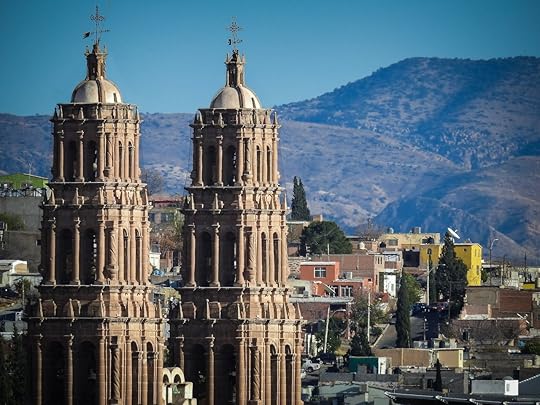
Photo: Esdelval/Shutterstock
The capital of the largest Mexican state is a peculiar city with wide streets, one-floor buildings, and plenty of cowboy boot and hat stores. Beyond it is a vast desert landscape. The dry climate tends to keep people behind doors during hot afternoons. As a starting point, the El Chepe train trip through Copper Canyon is one of the most unique experiences to have anywhere in Mexico. It does get a lot of Mexican tourists, but most of them just spend the night to hop on the train first thing in the morning — so you’ll probably be the only tourist wandering around the city during the day.
Several museums are worth visiting with the Historical Museum of the Mexican Revolution at the top of the list. Here, you can get a sense of how General Francisco “Pancho” Villa lived during his famous revolutionary days. The museum houses furniture and everyday objects from the revolutionary years, as well as a collection of weapons used by Villa and his division in many combats against the governing elite and a century-old Dodge that witnessed the general’s assassination.
Also, don’t miss the cathedral, regarded as northern Mexico’s finest Baroque monument, and Casa Chihuahua Museum, the city’s cultural center. Only a block away is Plaza Mayor, a huge square where you can cool down under the shade of trees. It’s the only place in the city where you’ll meet indigenous Tarahumara people, famous for long-distance running. Most of them live in distant canyons and mountains, so they rarely come to the capital. The few women in distinctive flowery skirts who do come sell handmade crafts and dolls. If you buy some souvenirs, don’t bargain. For you, a few dollars is a cup of coffee; for them, it’s food for the entire family.
Head to the Mammoth Museum to check out the remains of large extinct animals, among them the grey whale, dinosaur, and, of course, mammoth. Another unconventional museum where you can brush up on your knowledge about history, science, and technology through play is the Semilla Museum.
On the culinary side, Chihuahua is known for some of the best pork and beef in the country. Order huevos con machaca for breakfast, a dish of scrambled eggs with dry shredded meat accompanied with beans, guacamole, and tortillas. You may notice that these are made of wheat, so if you prefer the corn ones, specify it at the time of ordering. For lunch or dinner, treat yourself to a plate of fat grilled steak. The finest cuts are served in high-end restaurants, so if you’re up for the best, prepare yourself for the financial hit that accompanies the formal setting. For those on a budget, many other cantinas serve thinner, but still tasty, carne asada. Either way, you won’t stay hungry in Chihuahua.
5. Santiago de Queretaro, Queretaro

Photo: NadyaRa/Shutterstock
Queretaro is one of the fastest growing and most dynamic Latin American cities, a strong business and economic center with a developing technology and aerospace industry. It’s also the metropolitan area with the best quality of life in the country and one of the safest cities in Mexico. The birth city of the country’s Independence movement is rich with architectural and artistic treasures, fine-dining restaurants, contemporary-design boutiques, and contagious youth energy.
Queretaro’s historic center is among the most diverse and dispersed of all Mexican capitals. You’ll need more than a regular morning to discover the numerous hidden pedestrian streets with stalls selling handmade crafts, the multiple gorgeous historic churches, and countless charming plazas with cafes and trendy restaurants complemented by towering trees and park benches. Keep walking until you’ve had your fill.
The Mucal, or Calendar Museum, is the first of its kind in the world, housing a unique collection of original Mexican calendars dating from 1890 until today, along with artworks from various painters. Even if calendars aren’t your thing, stop by just to appreciate the building itself and the marvelous garden with its pleasant café.
Next, head to the Temple of Santa Cruz, built on the site of the supposed miraculous appearance of Santiago that led to the Otomí surrender to the conquistadors. Here you can see how indigenous Chichimecas carved a cross. Take pictures of the monumental aqueduct that fed the city with fresh water for decades and still retains 75 semicircular arches and learn about the city’s role in the independence movement at the Regional Museum of Queretaro. 

More like this: The Sumidero Canyon is Mexico’s must-see natural wonder
The post The 5 most underrated state capitals in Mexico you need to visit appeared first on Matador Network.

The spiciest cuisines in the world

The chile pepper is as divisive a food as there is. People can either handle the heat and enjoy the pain, or they avoid every bit of pepper like it’s the plague. The group of people in the middle know their limit and stick to the devil they know. When traveling abroad to a chile-pepper-loving country, however, you can be in for a fiery surprise.
Every chile pepper — from China to Ethiopia to Peru and back — originally comes from Central and South America. The plant spread around the world during the Age of Exploration and took root in various regions, becoming a staple of the local cuisine. There was no mouth searing tom yum soup in what is modern Thailand before that, and no laal maas in India. There definitely weren’t Spicy King chile-eating competitions in China.
In just 500 years, though, the chile has become ingrained in dishes far from its home. The plant has also adapted to wherever it’s been taken. Sometimes that means it’s increased in spice, other times most of the spice has been bred out. The spice level is measured by the Scoville scale. Scoville Heat Units (SHU) measure the amount of capsaicin in a pepper, which is the compound in chile peppers that gives the burning sensation.
Peppers that have adapted to different climates have built up different SHU levels, meaning there are plenty of places for true spice heads to travel for their kicks. (For context, jalapeños are 2,500-8,000 SHU.) While not every dish in a country famous for spicy peppers is going to light up your mouth, the option is there. It’s also good to keep in mind that spice levels vary not only from variety to variety but also pepper to pepper, which is why you’ll see a range on the Scoville scale rather than a specific number.
These are the spiciest cuisines in the world, ranked by how high commonly used peppers are on the Scoville scale.
Note: We’ve left off the engineered peppers bred to be the hottest peppers in the world since those aren’t consumed on a regular basis.
T-5. Peru: aji amarillo (aka Peruvian pepper)
SHU: 30,000-50,000
Aji amarillo has been called the DNA of Peruvian cuisine. A ripe aji amarillo is a vibrant orange and spicy without being overwhelming, plus a touch of sweetness. Native cultures have used the peppers for hundreds of years, and this pepper from what is now Peru is likely one of the mother peppers spread around the world.
T-5. Ethiopia: brown berbere
SHU: 30,000-50,000
The brown berbere is a rich chocolate color and is a component of many different Ethiopian spice blends. The lower spice level (at least, low relative to others on this list) allows the smoked flavor in dried berbere to show through.
4. China: tien tsin (aka tianjin or Chinese red peppers)
SHU: 50,000-75,000
Most commonly found in Chinese food from Hunan and Szechuan, Tien Tsin peppers are about two inches long and bright red. They’re often dried and thrown seeds and all (seeds are where much of the capsaicin is) into dishes. They’re especially potent when paired with Szechuan peppercorns, which release a compound that numbs your mouth as you eat them.
T-3. Thailand: Thai chile (aka bird’s eye chile or phrik khi nu)
SHU: 50,000-100,000

Photo: Lallapie/Shutterstock
There are many types of Thai chiles, but the most common is the phrik khi nu. Chile peppers grow throughout the country and are used in a wide variety of dishes. If you’ve ever eaten authentic Thai food or visited Thailand, there’s a good chance it was some of the spiciest food you’ve ever eaten. It looks like the tien tsin in size and color and also grows with the pepper facing straight up like the tien tsin. The main difference in appearance is a slight curve to the Thai chile. You’ll really notice the difference in taste, though, as the cap on how spicy a Thai chile can get is higher.
T-3. India: Byadgi chile
SHU: 50,000-100,000
India’s cuisine is as diverse as it is vast. The food many Westerners think of as Indian is far from authentic (and there are many better curries than chicken tikka masala). The jwala pepper is a popular one throughout the country and hits between 20,000 and 30,000 SHU, but another common pepper really turns it up a notch. The Byadgi chile from the state of Karnataka is one of the more popular spicy chiles in the country. It’s a bright red color and often dried before being used to spice up masalas (sauces) and soups.
2. Mozambique: piri piri (aka African bird pepper)
SHU: 50,000-175,000
Food in Mozambique is filled with piri piri, but it’s also popular in Kenya and along the Swahili Coast, as well as South Africa (and anywhere that has a Nando’s). The name translates to “pepper pepper.” The peppers get about an inch long and are often dried before being used in any number of dishes. It’s similar to and closely related to the Thai bird’s eye chile, and it can be found in many Portuguese dishes as well. (Portuguese colonizers were the ones who brought the pepper to Africa’s eastern coast.)
T-1. Jamaica: Scotch bonnet (aka Jamaican Hot or Bahama Mama)
SHU: 100,000-350,000
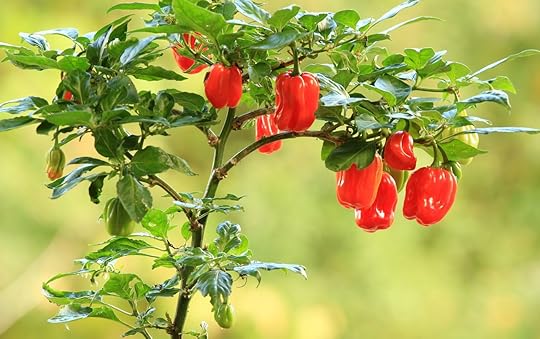
Photo: Gaby Fitz/Shutterstock
There’s nothing Scotch about the Scotch bonnet pepper. The pepper is eaten around the Caribbean, but it’s most famously consumed and grown in Jamaica. Scotch bonnets vary in color from yellow to red when ripe and are an important part of Jamaican food culture — it’s what puts the kick in jerk chicken. There’s a bit of a vegetal sweetness if you can make it past all the heat blasting your mouth with every bite.
T-1. Mexico: Habanero
SHU: 100,000-350,000
Mexico cannot be defined by just one pepper. There’s the jalapeño, the common pepper known and loved around the world. Then there’s the pequin, or bird’s pepper, that’s slightly hotter and used in many salsas. Few chile peppers capture the imagination of spice fiends like the habanero, however. Mexico’s hottest chile is originally from modern-day Peru, but today, most habanero production is centered around Yucatán, the Mexican state that juts into the Caribbean. 

More like this: 11 mouth-numbing ways the world does hot sauce
The post The spiciest cuisines in the world, ranked by pain level appeared first on Matador Network.

Germany releases currywurst coin
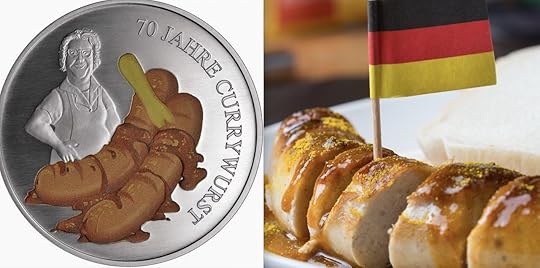
You might dislike a few of the state quarter designs, but none of those are as artistically questionable as this new German coin commemorating 70 years of currywurst. The coin, which features two massive bratwursts dripping with sauce, was released to celebrate a German favorite dish: bratwurst with curry sauce. And for those who really want to take their love of currywurst to the next level, the German mint is selling approximately 2,500 these coins for $14.90 each. It’s important to note, however, that these are not valid legal tender. That’s right, you can’t even use them to buy currywurst.

Photo: Staatliche Münze Berlin
The coin’s design celebrates the opening of a snack stall in Berlin by Herta Heuwer in 1949. According to local legend, business was slow, and Heuwer had plenty of time to experiment with new, delicious recipes. One of these recipes involved mixing sweet pepper, paprika, ketchup, and curry powder into a sauce and serving it over a bratwurst. She might not have known it then, but Heuwer had just invented a cult classic and a culinary sensation. Around 800 million currywursts are consumed each year in Germany.
Heuwer’s snack stall grew in size until the 1970s when it finally shut down. Hundreds of other sausage stands and restaurants across the world have replicated her currywurst, however, ranging from greasy drunk food to upmarket versions at fancy restaurants. Heuwer passed away in 1999 and took her recipe to the grave, but the currywurst faithful should be pleased to see her live on in this coin. 
H/T: Quartz

More like this: How currywurst became Berlin’s favorite street food (and where to try it)
The post Germany just released the ugliest coin ever in honor of the 70th anniversary of currywurst appeared first on Matador Network.

Alinea offers Clemson Tigers a meal
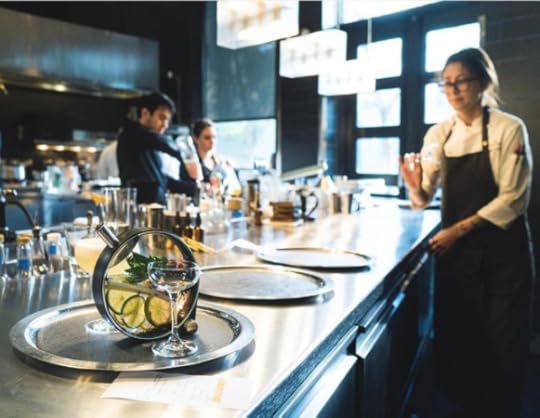
Clemson’s White House fast-food feast might not have been quite up-to-par with what they expected. Allegedly due to the government shutdown, and lack of kitchen staff, President Trump served the National Championship-winning Clemson Tigers a meal comprised entirely of fast food. The players might not be complaining, but apparently serious restaurateurs are seeing an opportunity to show the team what a real celebratory feast should look like. Nick Kokonas, a partner of the Alinea Group of restaurants, tweeted his offer to host the Clemson Tigers at Alinea in Chicago, widely considered to be one of the best restaurants in the world.
I could care less about college football. But I'm personally inviting the Clemson Tigers team and coaches to Chicago to experience what an actual celebration dinner should be.
I'm not joking.
Someone let them know what The Alinea Group does. It'll be worth it@ClemsonTigers
— nick kokonas (@nickkokonas) January 16, 2019
The only restaurant in Chicago with a three-star Michelin rating, Alinea prides itself on a luxurious dining experience with meals costing between $250 and $495 per person. That’s quite the step up from Trump’s fast food meal, which cost a total of $3,000 (which Trump says he paid for himself). This isn’t the first time Alinea has offered to host a sports team, either. In 2016, the restaurant hosted the Chicago Cubs after their World Series win.
In another tweet, Kokonas further explained his reasoning behind extending the invite.
nothing wrong with fast food from time to time. But when you knock off a national championship, it's time to teach our youth that there are experiences to strive for in life moving forward
Best airport bars in the US

Grabbing a stool at an airport bar generally means selecting an overpriced, watered-down cocktail or a short pour of wine from a sticky laminated menu. A new crop of airport bars is changing that, none more so than Root Down in Denver International Airport.
The Denver airport is one of the best places to grab a drink during a long layover or delay in general. New Belgium Brewing has a hub in the airport, and Vino Volo serves up fine wine with cheese plates. Few bars match up to Root Down in Concourse C, though.
The first thing you’ll notice at Root Down is the custom glass-topped bar top jetting out from the wall. Look through the glass and you’ll see individual compartments fitted with open suitcases adorned with clothing, jewelry, accessories and other curios from different eras. The vignettes are designed to be a snapshot in time to communicate the imaginary story of a traveler who used that luggage.
“It completely elevates the bar experience… communicates in a deeper level and somehow elicits an emotional response to go deeper into the human experience all the while being sociable,” says Justin Cucci, the owner of Edible Beats, the hospitality group that runs Root Down.
While you’re wondering where your bartop’s passenger may have been headed and why, order a drink from one of the knowledgeable and friendly bartenders, most of whom graduated from sophisticated cocktail programs in Denver before joining the airport team. The menu features classic drinks like the Negroni and Sazerac, as well as contemporary ones like Beet Down (gin, Aperol, beets, lemon, and mint), Pepper Blossom (vodka, St-Germain, jalapeño, grapefruit, lemon, and basil) and Don Draper, a citrus-infused riff on an Old Fashioned. Twenty-two taps spotlight Colorado’s vibrant beer scene while the food menu tempts with harissa carrot and quinoa salad, bento boxes, Colorado lamb sliders, and blackberry sesame duck wings.

Photo: Denver International Airport/Facebook
Cucci says Root Down’s ultimate goal was to engage solo travelers at the bar and maybe stir them to start a conversation with groups of travelers about their respective journeys. Ky Belk, who was the opening bar manager of Edible Beats for two years, says, “It was always the intent that Root Down DIA be a great restaurant and bar that just happens to be located in an airport, not just a great airport bar, [and] I think we’ve achieved that.”
Root Down isn’t alone in that regard. Airport bars around the US are upping their game. Here are some of the other airport bars in the US that will make a long layover a pleasant experience.
High West Distillery & Saloon, Salt Lake City International Airport, Terminal 2, Concourse E

Photo: High West Distillery/Facebook
Okay, we admit it, the airport outpost of the Utah craft spirit producer isn’t quite as fun to visit as its flagship location at Park City Mountain Resort, which is the world’s first ski-in, ski-out distillery. Still, you can build your own whiskey flight from High West’s selection, including Campfire High Reserve (a blend of Scotch, bourbon, and rye), A Midwinter Night’s Dram (rye finished in French oak Port barrels), and American Prairie Bourbon (the proceeds from which go toward helping its namesake reserve). There’s also a selection of handcrafted cocktails, including an Old and New Fashioned, and Saloon Bites like the bison and black Angus burger and pretzels with whiskey beer cheese.
Book & Bourbon Southern Kitchen, Louisville International Airport, Main Terminal

Photo: Louisville International Airport – SDF/Facebook
If you flew into Louisville, chances are you came to sample the bourbon. Whether you need a little something to quench your thirst right when you touch down or you already miss the native corn-based whiskey before you even leave, you’ll love perusing the list of more than 85 bourbons. The list at Book and Bourbon Southern Kitchen includes rare labels like Pappy van Winkle and Jefferson’s Presidential Select. Sit on a stool next to walls adorned with barrel heads from iconic brands and sip one while enjoying a buttermilk chicken sandwich. As for the “book” part of the moniker? The bar’s menu touts tasting notes, a primer on distillation and aging, while library cards let imbibers brush up on whiskey cocktails at home.
Cask & Larder, Orlando International Airport, Southwest Airlines, Gates 100 to 129

Photo: Orlando International Airport (MCO)/Facebook
A 6,000-square-foot space on Airside 2 with a 220-seat dining room, grab-and-go market, and two bar areas gives travelers lots of room to spread out. Though the bar’s name may make you think it skews heavy on whiskey, the menu really has something for everyone. There are Gotham Project wines on tap, proprietary drafts, and fresh cocktails like the Gin & Jam and a Moscow Mule riff made with lemonade. A Shot and a Wash section of the menu serves up an ounce of a spirit with a half pint of beer while Stubborn sodas are cane-sugar-based zero proof options. Use any or all of the above to wash down a Southern-inspired menu of conch hush puppies, shrimp and grits, and pimento cheese. 

More like this: Phoenix has the best airport food in the US, and it’s not even close
The post These airport bars will almost make you want to miss your flight appeared first on Matador Network.

Best orchid gardens in the world

Few flowering plant families are as diverse and geographically widespread as the orchid family, or Orchidaceae. Twenty-five thousand orchid species have been identified around the world. Some are dainty with monochromatic petals; others have big bulbous bodies and loud patterns like bright spots or stripes. Still others have the look, smell, and feel of a female bee (check out Ophrys to see for yourself) or resemble a monkey’s face (see Dracula aphrodes and Dracula marsupialis). For the best of the best in the wonderful world of orchids, visit these seven botanical gardens and admire their vast collections.
1. National Orchid Garden, Singapore Botanic Gardens — Singapore

Photo: Pumidol/Shutterstock
The first ever UNESCO World Heritage site in Singapore, these beautiful botanic gardens are celebrating their 160th anniversary this year. Head straight for the National Orchid Garden at the Tyersall Gallop Entrance to see over 1,000 orchid species and twice as many hybrids. More than 60,000 flowers decorate the garden in total, one for every color imaginable and then some. Admission is $5 for adults, $1 for students and seniors, and free for children under 12.
2. Fuqua Orchid Center, Atlanta Botanical Garden — Atlanta, Georgia

Photo: Chanya Thirawarapan/Shutterstock
Orchid lovers get three times the displays at Atlanta Botanical Garden’s Fuqua Orchid Center. Visit the Orchid Atrium for a mix of orchids and other tropical plants, or drop by the Tropical High Elevation House for orchids native to the Andes, Venezuela, and Borneo. There’s also the Orchid Display House, which showcases tropical species like the Asian slipper orchid. Seasonal events including the upcoming Orchid Daze show (on from February 9 to April 7 this year) also pass through the Fuqua Orchid Center.
3. Ernest Thorpe Orchid House, Durban Botanic Gardens — Durban, South Africa
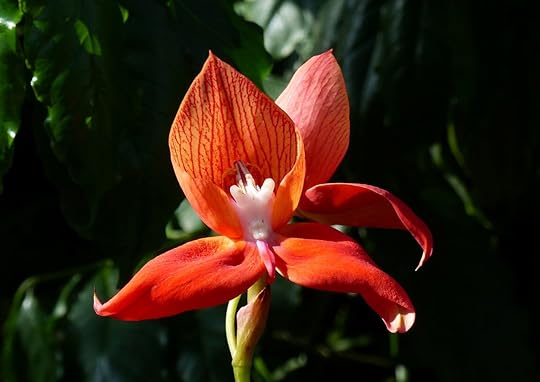
Photo: guentermanaus/Shutterstock
This house of flora in Durban, South Africa, opened its doors midway through the 1800s. There wasn’t an orchid in sight for nearly a century, but by 1962, there was a dedicated orchid house among the gardens, named for the curator who started the orchid collection. Today, thousands of orchids representing 75 distinct genera are grown onsite and showcased alongside bromeliads and other flowers when they’re in bloom.
4. Soroa Orchid Garden — Cuba

Photo: Kraiot/Shutterstock
The best time to visit the Soroa Orchid Garden is spring when most of the orchids are in bloom. Much of the flora displayed here grows natively, and the orquidário is committed to the conservation of Cuban orchids. Hundreds of different species in all sizes, shapes, and scents cover the beautifully landscaped garden. Guided tours are recommended. Not everything is well marked, but the staff is knowledgeable.
5. Orchid Garden, Perdana Botanical Gardens — Kuala Lumpur, Malaysia

Photo: Salparadis/Shutterstock
Orchids and hibiscus are the highlights of Perdana Botanical Garden in Kuala Lumpur. Hibiscus is tough competition for the star-attraction title seeing as it’s the national flower of Malaysia, but the elegant orchids here really do steal the show. Peruse 800 orchid species dressed in oranges, pinks, purples, and other sunset hues arranged neatly around a rock garden and pergola for the creepers and climbing varieties. Admission is free.
6. Gothenburg Botanical Garden — Gothenburg, Sweden
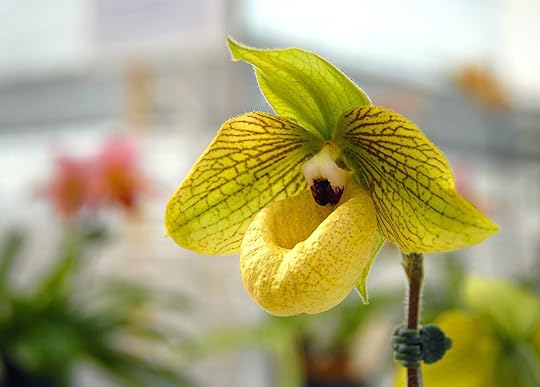
Photo: Wantanee Chantasilp/Shutterstock
This botanical garden stores the biggest collection of tropical orchids in Sweden. You’ll see 1,500 different species represented on your tour of the site’s greenhouses, alongside fascinating carnivorous plants and the rare Easter Island Tree. Among the species present are the yellow lady’s slipper orchid and the showy lady’s slipper orchid with its pink body and white petals.
7. Monteverde Orchid Garden — Monteverde, Costa Rica

Photo: Jardín de Orquídeas – Monteverde Orchid Garden/Facebook
Orchids come in many forms, some of which are truly wild. Though it has a smaller collection than some of the others on this list at around 460 species, you can count on this orchid garden to display some of the craziest-looking flowers you’ve ever seen, from white-and-pink-speckled blooms to large, tiger-striped plants. Plus, the site houses some truly tiny orchids, the smallest measuring just two centimeters wide. Visit any time of year as the garden sees “an average of 120 orchids in bloom per day,” according to the website. 

More like this: The 7 most fascinating flowers around the world you need to see in person
The post The 7 most stunning orchid gardens in the world appeared first on Matador Network.

Matador Network's Blog
- Matador Network's profile
- 6 followers



